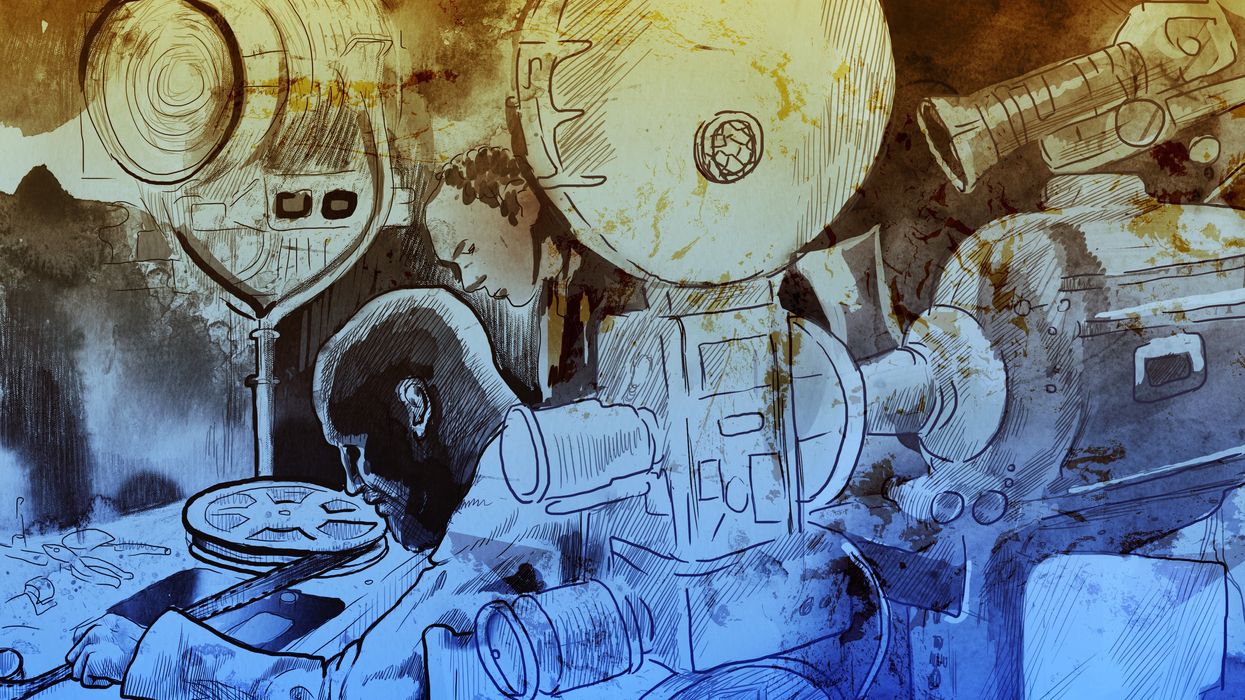Awesome Filmmaking Stories You May Have Missed This Week

Every week, we publish a handful of filmmaking stories. In order to do that, we read pretty much everything related to filmmaking news, and believe me, there's a whole lot of content out there. For that reason, I'm starting up a weekly roundup post to point you guys in the direction of awesome filmmaking content that we come across in our day-to-day work, but can't share for one reason or another. So let's get right to it.
Filmmaker IQ - How Do We Measure Audience?
A few weekends ago, Jurassic World broke all sorts of box office records. If you've ever wondered how all of those box office numbers are measured, and how Hollywood does business with distributers and theaters, this lesson from John P. Hess and Filmmaker IQ is a must.
Film & Digital Times - All About Dolly Track
You might be surprised by how technical of a subject dolly track is. In this detailed writeup from Wick Hempleman, we get a crash course in the history and usage of dolly track, which includes information about various track sizes, materials, and manufacturers.
Zacuto - How To Light a Car
Legendary Hollywood cinematographer Bruce Logan ASC is writing posts for Zacuto these days, and they're all awesome. In this post, Logan talks about the many aspects of lighting car exteriors, both in natural and studio environments. For commercial DPs tasked with making cars look great, this is a must read.
Story & Heart - 5 Tips For Making a Killer Reel
Demo reels are a tricky subject, and it seems like everyone has an opinion about what makes a reel effective. Our friends over at Story & Heart recently pulled 5 hard-hitting tips for demo reels from a webinar they did for the Academy of Storytellers.
IndieWire - Why The Co-Founder of Slamdance Invented a New Lens System
As part of a Kickstarter campaign that he's running for an indie feature, Dan Mirvish, co-founder of the Slamdance Film Festival, is offering a one-of-a-kind lens system that he invented, fittingly named MirvishScope, for only $35. In this IndieWire piece, Mirvish explains where the idea for MirvishScope came from and how he designed the system. If you're looking for ways to make crazy images, with all sorts of weird flares and reflections, with your Canon DSLR for very little money, MirvishScope might be a great fit for you.
Short Of The Week - Motherf*cker
Short of the Week is always promoting fantastic material, but this film, if you want to call it that, is something a bit different. Shot in a single take that lasts almost 9 minutes, Motherf*cker is an experimental vignette adapted from a stageplay, and it's part of an interesting project called Takeaway Scenes. It is absolutely fascinating and definitely NSFW.
ProVideo Coalition - Are You, As an Editor, Defined By the NLE You Use?
In this fantastic think-piece on ProVideo Coalition, Scott Simmons explores a question that all of us should be asking ourselves. Are we defined by the tools we use? In the context of this article, it's all about people who consider themselves Avid editors or FCPX editors instead of creative storytellers. Of course, this can easily be expanded into cinematography. Does your camera define who you are as an artist?
Tuts+ - The Dramatic Documentary: Telling True Stories with Fact and Feeling
Documentary filmmaking exists in a gray area. On one hand, it most often deals with non-fiction subjects, and is, in many ways, akin to long-form journalism. On the other hand, filmmaking itself is a form of manipulation, and dramatic liberties often have to be taken in order to make the content engaging. This article from Marie Gardiner on Tuts+ explores this concept a bit further, more specifically dealing with how documentary filmmakers can add dramatic flair to their storytelling while staying true to the non-fiction nature of the form.
---
That's all I've got for this week. If there are any other awesome filmmaking stories that you think everybody should read, leave them down in the comments with a brief description.















